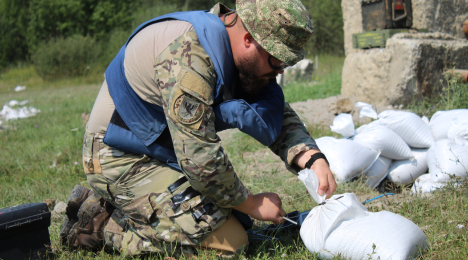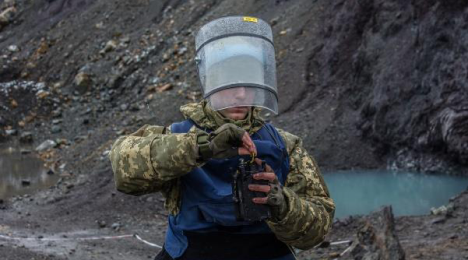
Making Ukraine Safer, One Step at a Time
Ukraine is now the most mined country in the world, with over 146,000 square kilometers potentially contaminated with mines, munitions and other explosive devices. That makes nearly a third of the country uninhabitable, with millions of Ukrainian displaced and hundreds of thousands left without jobs or at risk of losing their lives or limbs.
No other nation has the same dire need for tens of thousands of deminers to render such a vast area safe during war. Although drones, AI, and mechanical means can quickly survey and secure larger tracts of land, villages, urban areas and infrastructure needs clearing and disposal work to be done by hand.
The shortage of certified mine action professionals with both military and humanitarian demining expertise exacerbates the problem. Even among those already engaged in demining, there is a lack of training to international standards and to higher levels of certification needed to safely manage spot task teams and to prevent on-the-job accidents and fatalities.
In response to this critical situation, Mriya Aid has undertaken the vital task of funding and implementing training programs for personnel from various Ukrainian military and civilian services. Since 2022, over 230 Ukrainian men and women have been certified in the Mriya Aid demining program. The 5-week training in International Mine Action Standards (IMAS) of explosive ordnance disposal (EOD) is a game changer, significantly improving professional skills, instilling protocols for various contingencies, and providing graduates with the competence and self-confidence needed to work safely and efficiently in the field. These courses are provided by Praedium Consulting Malta (PCM) at their state-of-the-art facilities in Kosovo. PCM has been a key player in mine action since 1999, providing IMAS and other demining training to deminers who travel from across the globe for these quality courses.

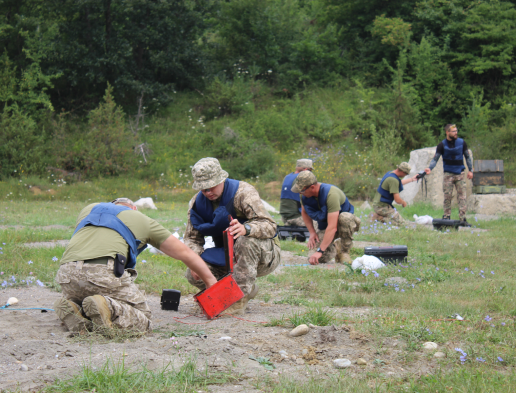
The demining training program funded by Mriya Aid is unique in that it includes intense study, knowledge sharing, and hands-on practice on a particularly wide variety of explosive threats, including those specific to the current war in Ukraine. The subject matter experts at PCM, former combat engineers teaching these courses, work constantly with Ukrainians to keep abreast of the latest techniques used by the Russians to mine Ukrainian infrastructure, buildings and fields, and provides demining professionals being certified with the most appropriate information and equipment to get the job done safely and securely.
Mriya Aid provides training and equipment for Ukrainian deminers:
Training
Demining equipment
Assessment and analyses
Lesya Granger
Chair and CEO, Mriya Aid
IMAS Training funded by Mriya Aid
IMAS Training funded by Mriya Aid
IMAS Training funded by Mriya Aid
IMAS Training funded by Mriya Aid
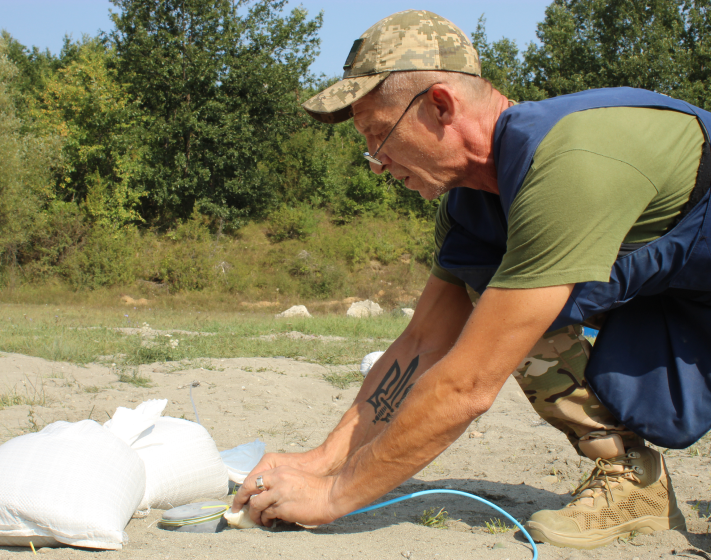
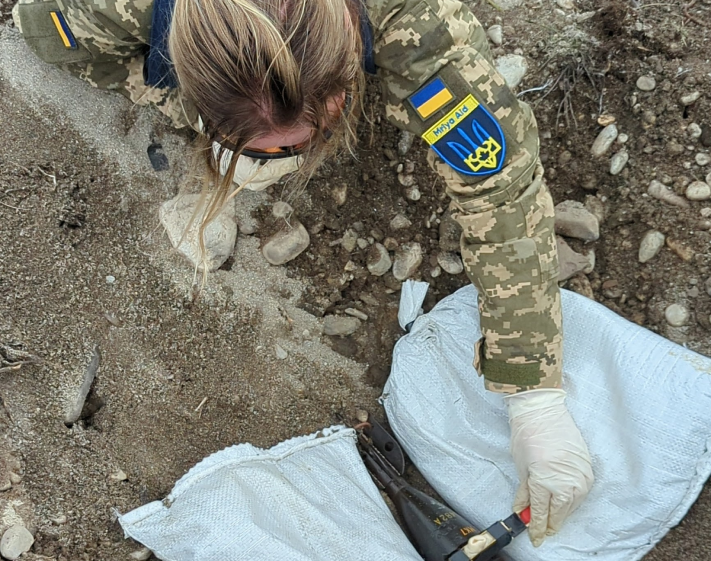
Male, 18-29 yrs May 29, 2024
The Hidden Dangers of Contaminated Land
“We find ‘explosive gifts’ in the most unexpected places, from front doors to personal belongings, closets, beds, even beehives. The most dangerous are grenades on tripwires.”
explained Serhii Reva, Head of the Department for Organizing Humanitarian Demining at the State Emergency Service of Ukraine
Here are the main risks associated with mined areas in Ukraine:
Human Losses
Mines lead to serious injuries, loss of limbs, and fatalities among civilians, especially children. According to the UN data, since the onset of the large-scale invasion, over 10,000 civilians have been killed in Ukraine. Approximately 20,000 people have been injured, including from mines and explosive remnants of war.
Diverse Dangers
Up to 60% of Russian munitions fail to function but remain extremely dangerous. The most common explosive objects contaminating Ukraine are mortar mines, anti-tank and anti-personnel mines, traps and improvised explosive devices, as well as various types of unexploded ordnance, ammunition, missiles, and bombs.
Food Security
Ukraine is one of the largest exporters of grain and other agricultural products. Mined agricultural areas limit agricultural production opportunities. Since early 2022, wheat production has dropped by over 40%, leading to projected low exports and rising global food prices, which particularly affect food-insecure communities in Asia and North Africa.
Obstacles to Recovery
Mined territories complicate or make impossible the restoration of infrastructure, agriculture, and residential areas. Explosive remnants of war render infrastructure and productive land unusable. Delivering humanitarian aid and assistance to mined and contaminated areas can be dangerous and complicated.
Economic Losses
Contaminated lands and suspected hazardous areas restrict access to resources and farmland, leading to economic losses for the population and the state. Russia’s invasion has severely impacted Ukraine’s economy, with GDP contracting by almost 30% in 2022, and projected to reach pre-war levels only by 2030.
Psychological Stress
People living with unexploded ordnance in their communities and regions face fear and anxiety. Their hospitals and schools may be closed. Children cannot play freely and people cannot enjoy nature without worry and apprehension. Displaced Ukrainians may fear returning to their homes and communities.
Environmental Consequences
Unexploded ordnance contaminates the surrounding environment, affecting flora and fauna. Wild animals are killed by mines set off by tripwires. Chemicals leach from the devices, contaminating soil and water. Mines are carried by waterways and covered by vegetation, masking their presence.
Lack of Information
Mine and explosive ordnance risk education goes hand in hand with demining and mine action. Raising awareness and promoting behavioral change reduces the risk of civilian injury or death, and helps communities cooperate with the state agencies and local authorities responsible for demining.
3,500+
Individual donors
200+
Ukrainian sappers trained and certified
100+
Ukrainian defence units supported
20+
Ukrainian women sappers trained and certified
Help Us Make a Difference


